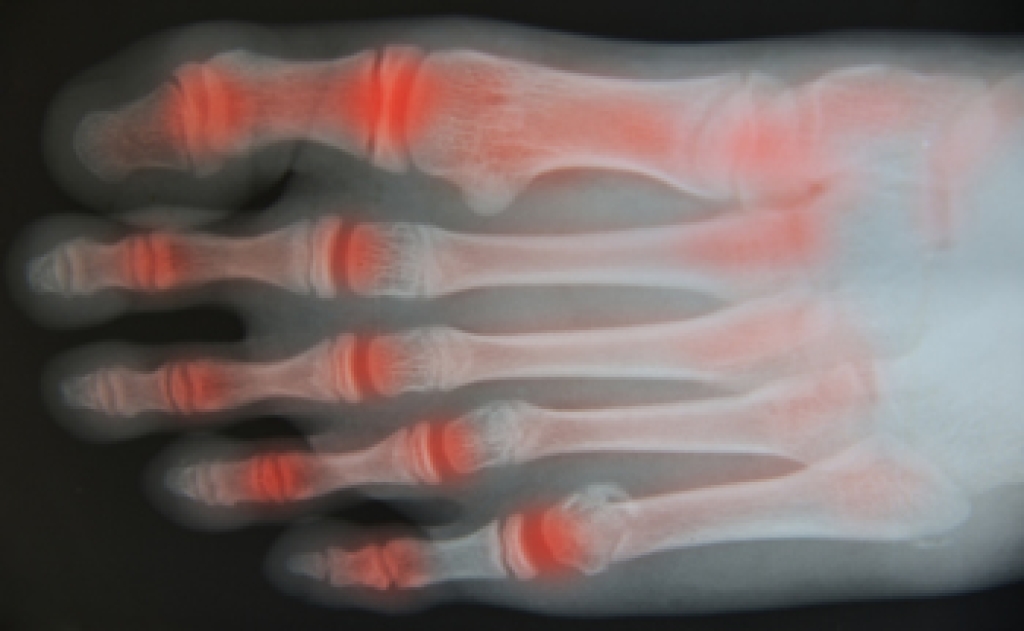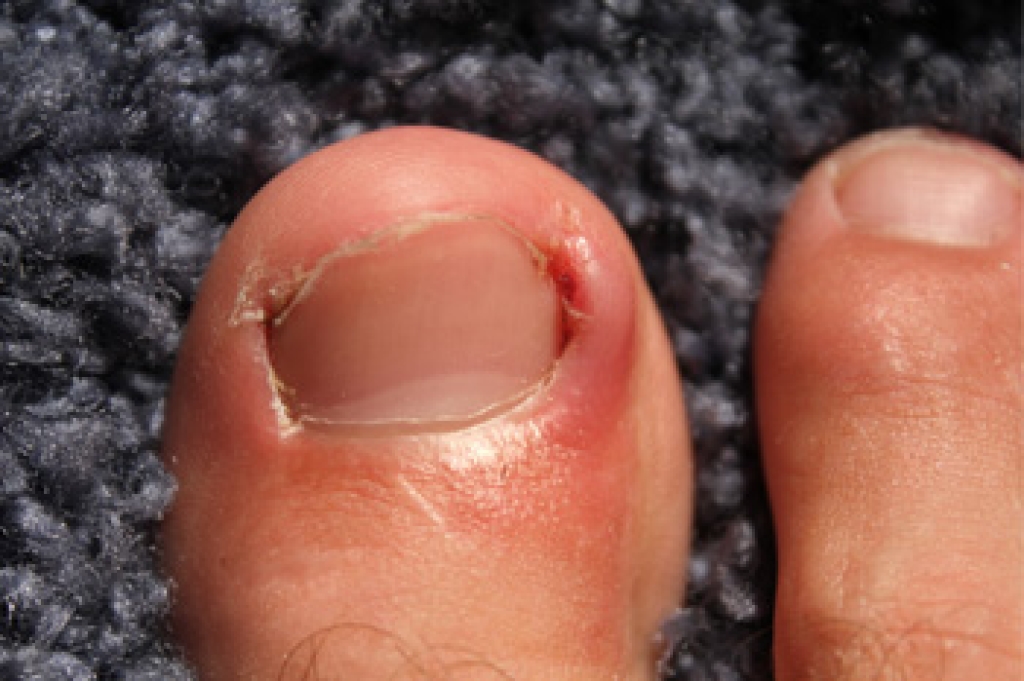Connect With Us
Blog
Blog
Rheumatoid Arthritis May Affect Different Parts of the Foot
 If you are experiencing chronic pain, which may be caused by inflammation in your feet, you may have rheumatoid arthritis. This uncomfortable ailment is caused by an autoimmune condition and will typically affect the tissues in the feet, which may cause severe pain and swelling. When this condition develops in the feet, the joints in the ankle may become affected as a result of possible damage that the tissues and ligaments may endure. This may cause diminished support in the ankle bones and can cause difficulty in walking. If rheumatoid arthritis (RA) develops in the center of the foot, damage to the ligaments may cause the arch to gradually collapse, and desired relief may be felt by wearing shoe inserts. If you are experiencing this type of foot pain, it’s suggested to consult with a podiatrist, so the proper treatment techniques can begin.
If you are experiencing chronic pain, which may be caused by inflammation in your feet, you may have rheumatoid arthritis. This uncomfortable ailment is caused by an autoimmune condition and will typically affect the tissues in the feet, which may cause severe pain and swelling. When this condition develops in the feet, the joints in the ankle may become affected as a result of possible damage that the tissues and ligaments may endure. This may cause diminished support in the ankle bones and can cause difficulty in walking. If rheumatoid arthritis (RA) develops in the center of the foot, damage to the ligaments may cause the arch to gradually collapse, and desired relief may be felt by wearing shoe inserts. If you are experiencing this type of foot pain, it’s suggested to consult with a podiatrist, so the proper treatment techniques can begin.
Because RA affects more than just your joints, including the joints in your feet and ankles, it is important to seek early diagnosis from your podiatrist if you feel like the pain in your feet might be caused by RA. For more information, contact Raul Hidalgo DPM of South Texas Foot & Ankle Care. Our doctor will assist you with all of your podiatric concerns.
What Is Rheumatoid Arthritis?
Rheumatoid Arthritis (RA) is an autoimmune disorder in which the body’s own immune system attacks the membranes surrounding the joints. Inflammation of the lining and eventually the destruction of the joint’s cartilage and bone occur, causing severe pain and immobility.
Rheumatoid Arthritis of the Feet
Although RA usually attacks multiple bones and joints throughout the entire body, almost 90 percent of cases result in pain in the foot or ankle area.
Symptoms
- Swelling and pain in the feet
- Stiffness in the feet
- Pain on the ball or sole of feet
- Joint shift and deformation
Diagnosis
Quick diagnosis of RA in the feet is important so that the podiatrist can treat the area effectively. Your doctor will ask you about your medical history, occupation, and lifestyle to determine the origin of the condition. Rheumatoid Factor tests help to determine if someone is affected by the disease.
If you have any questions, please feel free to contact our office located in San Antonio, TX . We offer the newest diagnostic and treatment technologies for all your foot care needs.
What Causes an Ingrown Toenail?
 A red, tender, and swollen area will appear on the side of the big toe if you are experiencing an ingrown toenail. This uncomfortable condition is typically a result of wearing shoes that fit too tightly, enduring an injury to the toe, or trimming the toenails incorrectly. In more severe cases, there may be an excess of fluid that builds up surrounding the affected area, or the toe could bleed or have pus draining from it. Ingrown toenails develop when the nail grows into the skin on the side of the toe, and pain generally accompanies this ailment. It is suggested to seek treatment as quickly as possible, and this may prevent infection. There are several ways to prevent ingrown toenails from developing, including wearing shoes that fit properly, wearing clean socks, and washing the feet daily. Research has shown that a common treatment method is referred to as a partial nail avulsion, and this involves removing a portion of the infected toenail. If you feel you have developed an ingrown toenail, it is advised to counsel with a podiatrist, so the best treatment option can be determined.
A red, tender, and swollen area will appear on the side of the big toe if you are experiencing an ingrown toenail. This uncomfortable condition is typically a result of wearing shoes that fit too tightly, enduring an injury to the toe, or trimming the toenails incorrectly. In more severe cases, there may be an excess of fluid that builds up surrounding the affected area, or the toe could bleed or have pus draining from it. Ingrown toenails develop when the nail grows into the skin on the side of the toe, and pain generally accompanies this ailment. It is suggested to seek treatment as quickly as possible, and this may prevent infection. There are several ways to prevent ingrown toenails from developing, including wearing shoes that fit properly, wearing clean socks, and washing the feet daily. Research has shown that a common treatment method is referred to as a partial nail avulsion, and this involves removing a portion of the infected toenail. If you feel you have developed an ingrown toenail, it is advised to counsel with a podiatrist, so the best treatment option can be determined.
Ingrown toenails can become painful if they are not treated properly. For more information about ingrown toenails, contact Raul Hidalgo DPM of South Texas Foot & Ankle Care. Our doctor can provide the care you need to keep you pain-free and on your feet.
Ingrown Toenails
Ingrown toenails occur when a toenail grows sideways into the bed of the nail, causing pain, swelling, and possibly infection.
Causes
- Bacterial infections
- Improper nail cutting such as cutting it too short or not straight across
- Trauma to the toe, such as stubbing, which causes the nail to grow back irregularly
- Ill-fitting shoes that bunch the toes too close together
- Genetic predisposition
Prevention
Because ingrown toenails are not something found outside of shoe-wearing cultures, going barefoot as often as possible will decrease the likeliness of developing ingrown toenails. Wearing proper fitting shoes and using proper cutting techniques will also help decrease your risk of developing ingrown toenails.
Treatment
Ingrown toenails are a very treatable foot condition. In minor cases, soaking the affected area in salt or antibacterial soaps will not only help with the ingrown nail itself, but also help prevent any infections from occurring. In more severe cases, surgery is an option. In either case, speaking to your podiatrist about this condition will help you get a better understanding of specific treatment options that are right for you.
If you have any questions, please feel free to contact our office located in San Antonio, TX . We offer the newest diagnostic and treatment technologies for all your foot care needs.
Blog Archives
- 2025
- 2024
- 2023
- 2022
- 2021
- 2018
- 2017



